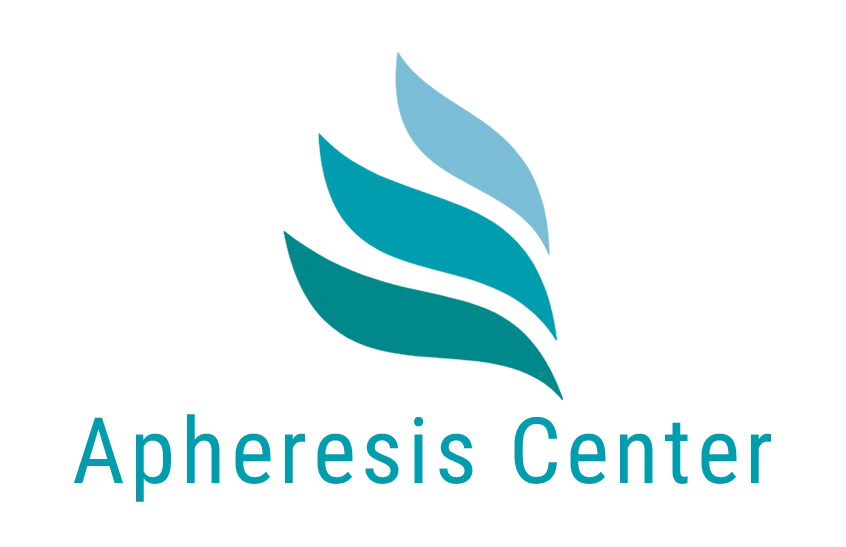
Autoantibodies – POTS/ Long Covid / CFS /SFN & other diagnostics
POTS/ Long Covid diagnostics
We offer a test panel for POTS patients. In addition to the tests for CFS diagnostics, this panel also includes testing for anti-muscarinic acetylcholine receptor 1 (M1) antibodies, anti-muscarinic acetylcholine receptor 2 (M2) antibodies, anti-muscarinic acetylcholine receptor 5 (M5) antibodies, as well as testing for alpha-1 adrenergic receptor autoantibodies and alpha-2 adrenergic receptor autoantibodies. Prof. Dr. Kem from the University of Oklahoma Health Sciences Center and VA Medical Center describes for the first time the occurrence of AT1R antibodies in POTS patients. The POTS test profile has therefore been expanded to include AT1R-Ab testing.
- Angiotensin II receptor 1 (AT1R) IgG autoantibodies
- Endothelin receptor A (ETAR) IgG autoantibodies
- Beta-1 adrenergic receptor autoantibodies
- Beta-2 adrenergic receptor autoantibody
- Muscarinic choline receptor (M1) autoantibody
- Muscarinic choline receptor (M2) Auto-antibody
- Muscarinic choline receptor (M3) Auto-antibody
- Muscarinic choline receptor (M4) Auto-antibody
- Muscarinic choline receptor (M5) Autoantibody
- Alpha-1 adrenergic receptor Auto-antibody
- Alpha-2 adrenergic receptor Auto-antibody
CFS diagnostics
We offer a test system for the diagnosis of chronic fatigue syndrome / myalgic encephalomyelitis (CFS / ME). The results were published in Brain, Behaviour, and Immunity (Löbel M., Scheibenbogen C. et al. 2015 Sep 20).
The tests for the quantitative determination of anti-b1-adrenergic receptor antibodies, anti-b2-adrenergic receptor antibodies, anti-muscarinic acetylcholine receptor 3 (M3) antibodies and anti-muscarinic acetylcholine receptor 4 (M4) antibodies are available too.
- Beta-1 adrenergic receptor autoantibody
- Beta-2 adrenergic receptor autoantibodies
- Muscarinic choline receptor (M3) autoantibody
- Muscarinic choline receptor (M4) autoantibody
Small fibre neuropathy (SFN) Diagnostics
Small fibre neuropathy (SFN) is a subtype of neuropathy characterised by selective involvement of unmyelinated or thinly myelinated sensory fibres. Its pathogenesis encompasses a wide range of immune-mediated, metabolic, toxic, hereditary and genetic disorders. SFN has been described in association with Sjögren’s syndrome, coeliac disease, systemic lupus erythematosus, rheumatoid arthritis, type 1 diabetes mellitus, inflammatory bowel disease, sarcoidosis and paraneoplastic syndrome. Some data also suggest an association with Hashimoto’s thyroiditis. Clinical symptoms of SFN can manifest as isolated sensory disturbances as well as isolated autonomic disturbances.
Intravenous immunoglobulin therapy (IVIG) showed a significant effect in the treatment of patients with autoimmune-mediated SFN in two large retrospective studies with comparable response rates (77% and 83% of patients).
Autoantibodies against fibroblast growth factor receptor-3 (FGFR3-IgG) and tri-sulphate heparin di-saccharide (TSHDS-IgM) are elevated in SFN. The efficacy of IVIG administration in FGFR3-Ab and TSHDS-Ab positive patients is currently being investigated in a clinical trial.
- FGFR-3 autoantibodies
- TSHDS autoantibodies
Environmental Toxins and Pathogens Tests
- Heavy Metals (aluminum, antimony, arsenic, barium, bismuth, cadmium, cesium, chromium, cobalt, copper, gadolinium, gallium, gold, indium, iridium, lead, manganese, mercury, molybdenum, nickel, palladium, platinum,rubidium, silver, strontium, tantalum, tellurium, thallium, tin, titanium, uranium, vanadium, zinc, zirconium)
- Environmental Toxins Part 1 (Pesticides: Aldrin, Chlorpyrifos, Chlorthalonil, Dichlorfluanid, Dieldrin, Endosulfan, Hexachlorbenzol, α/β/γ-Hexachlorcyclohexan, Heptachlorepoxid, Pentachloranilin, p-p-DDE, p-p-DDT, Tolylfluanid, Insecticides (pyrethroids): Cyfluthrin, cypermethrin, deltamethrin, permethrin, PCBs : 101, 138, 153, 180)
- Environmental Toxins Part 2 (Volatile Organic Compounds: Benzene type/BTEX: Benzene, ethylbenzene, trimethylbenzene, toluene, xylene, Alcohol and ketone type: Acetone, 1-butanol, 2-butanol, i-butanol, ethanol, methyl ethyl ketone, methyl isobutyl ketone, 1-propanol, 2-propanol, Halogenated hydrocarbons: Dichloroethene, dichloromethane, tetrachloromethane, trichloroethane,trichloroethene, trichloromethane
- Complete Analysis (Heavy Metals, Environmental Toxins Part 1 and Part 2)
Amyloid Fibrin Microclots and Microparticles Test (Biocode Microclot Test)
Other tests (examples – please send us an email to info@apheresiscenter.eu if you are looking for a specific test not listed)
- Igm
- ANA
- Celiac
- Mono
- EBV
- LYME
- Herpes
- Hormonal panel
- Lupus anticoagulant (LA)
- Anti-beta2-glycoprotein-1 (anti-B2GP1)
- Anticardiolipin antibodies (aCL)
*Service provided by Celltrend, Analytics Lab, Inus Lab and partners
Bacteria, Viruses, Parasites and Yeast&Mould panels
EliSpot (Enzyme-Linked ImmunoSpot)
EliSpot is an advanced immunological test that measures the activity of T cells in response to specific pathogens. This method is particularly valuable for identifying chronic infections, such as Lyme disease and viral co-infections, by detecting cytokine release at the single-cell level. By revealing how actively the immune system is responding to an antigen, EliSpot provides deeper insights into immune function than conventional antibody testing. This makes it an essential tool for diagnosing long-standing or hidden infections, especially in complex chronic illness.
TickPlex® Multiplex ELISA
TickPlex® is a cutting-edge multiplex ELISA test that screens for multiple tick-borne pathogens in one sample. Unlike standard ELISAs, TickPlex includes antigens for Borrelia persister forms—bacteria that may evade standard immune responses and contribute to chronic Lyme disease. This test also covers co-infections such as Bartonella, Babesia, Ehrlichia, and more. It’s ideal for patients with persistent symptoms after tick exposure or suspected chronic infection. Fast, comprehensive, and reliable, TickPlex supports early intervention and tailored treatment strategies.
Serological Testing Panel
Our lab utilizes a full suite of serological diagnostic methods, including ELISA, SeraSpot®, IFT (Indirect Immunofluorescence Test), Immunoblot, and ImmunoArray. These tests are designed to detect specific antibodies or antigens associated with various bacterial, viral, and parasitic infections. Serological testing is essential for evaluating both current and past exposure, as well as monitoring treatment progress. Combined with cellular testing, this panel provides a robust overview of the immune response and pathogen burden.
Tick Testing (Pathogen Analysis in Ticks)
If you’ve removed a tick, don’t throw it away—send it to our lab for analysis. We test ticks for a wide range of pathogens, including Borrelia, Babesia, Bartonella, Rickettsia, and others. Knowing what pathogens a tick carries can help guide early diagnostics and reduce uncertainty. This proactive step can provide peace of mind or support faster treatment decisions in case symptoms arise.
iSpot® Immune Response Test
The iSpot® test is a next-generation cellular immunity assay that analyzes T-cell activity against infectious agents. It measures the release of critical cytokines—IFN-γ and IL-2—offering insight into the current immune system response. iSpot is especially useful for diagnosing chronic infections like Lyme disease and SARS-CoV-2, even when antibody levels are no longer detectable. Its high sensitivity and specificity make it an excellent tool for monitoring disease progression and treatment effectiveness.
CD57+ Cells and Immune Regulation
CD57+ Natural Killer (NK) cells play a critical role in immune surveillance and chronic infection recovery. Low levels of CD57+ cells are commonly seen in patients with chronic Lyme disease and related immune dysregulation. This marker can be used as a prognostic tool during and after treatment, helping clinicians evaluate recovery and guide further intervention. It is particularly valuable in long-term cases where immune exhaustion is suspected.
ToxiPlex® Mycotoxin Blood Test
ToxiPlex® is an enzyme immunoassay that screens for five major mycotoxins—including Ochratoxin A and Aflatoxin B1—from a single blood sample. Mycotoxins are toxic compounds produced by molds that commonly contaminate food, air, and indoor environments. Chronic exposure can contribute to fatigue, immune dysfunction, and neurological symptoms. Early detection with ToxiPlex allows for prompt detoxification strategies and environmental remediation to reduce ongoing exposure.
Stool PCR Parasite Panel
The Parasite Multiplex PCR is a modern diagnostic test that detects parasitic DNA directly from stool samples. It offers a highly sensitive and specific way to identify intestinal parasites such as Giardia, Entamoeba histolytica, and Blastocystis hominis. This test is particularly beneficial for patients with chronic digestive issues, unexplained fatigue, or a history of travel to high-risk regions. Fast and accurate, Stool PCR allows for precise treatment planning and resolution of persistent gut symptoms.
Further test available ar listed on our Price List
*Service provided by Armin Lab
Food Intolerance Panel (IgG – Serum) [FIPS]
This food intolerance screen is a very comprehensive screen covering IgG reactions to 287 foods (vegetables, fish & seafood, fruits, spices, nuts, legumes, meat, egg & milk, cereals & seeds, nuts, coffee & tea and novel foods).
Uniquely, this report includes quantification of IgG levels to each food, which helps to reduce potential inaccuracies that IgG tests are prone to due to their design (IgG-based food sensitivity tests assume that all IgG is pro-inflammatory, whilst some of it can be anti-inflammatory). In clinical nutrition, this test is used as an aid to target specific food allergies and to determine which food groups to begin elimination testing with. In this way, a balanced and effective diet plan can be established more quickly.
Further test available are:
Allergy Profiles for Foods and Inhalants and Histamine – see our Price List
Sample Test Report – Food Intolerance Panel
*Service provided by Vivahealth Lab

